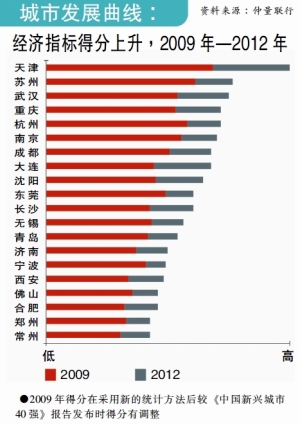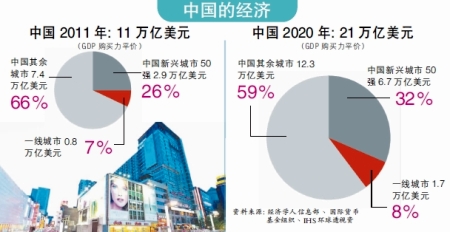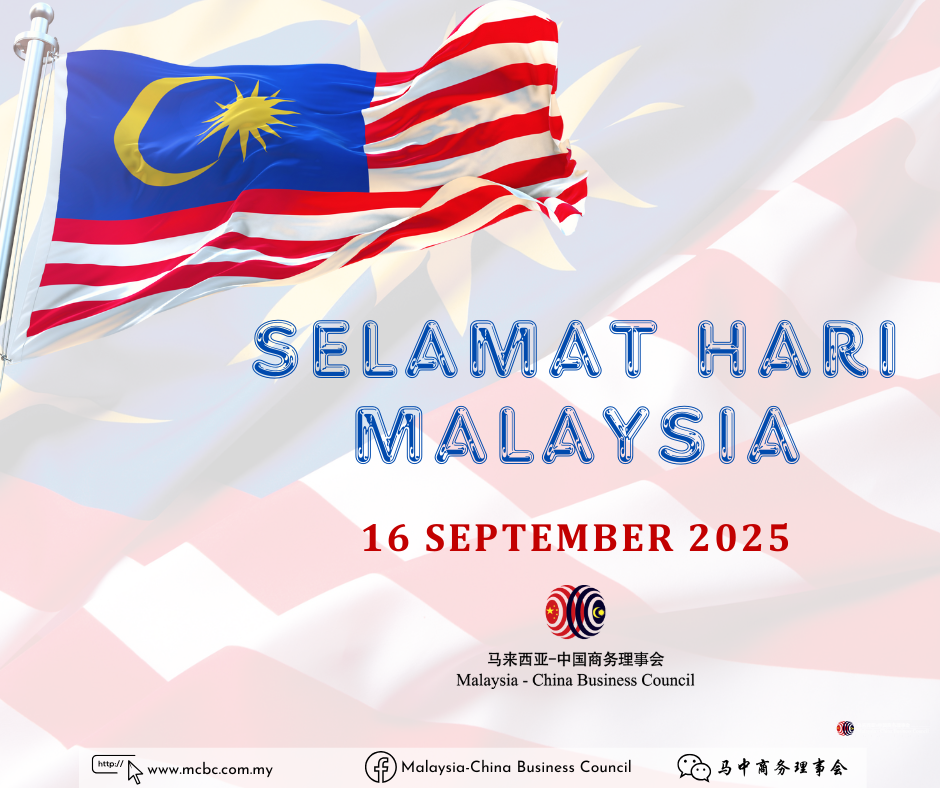中国经济发展动力,从东部的沿海地区,渐渐往内陆的二、三线城市移,外贸发展局(MATRADE)认为,大马企业应抓紧时机,赶搭这趟成长列车。
外贸发展局副总执行长拿督卡马鲁丁哈山促请有能力的大马企业,到中国二线城市开发市场。
8年后晋升为大城市
当中,成都、重庆、西安、郑州和沈阳等,都是目前备受看好的二线城市,估计到了2020年,这些城市都将晋升为大城市。
“今时今日的中国,发展最迅速不再是东部的沿海城市,而是二、三线的内陆城市,这些城市已崛为中国经济发展的新动力。”
他预计,中国未来数年经济都会保持不俗的成长,牵头带动的将是这些内陆城市。
他今天出席由该局主办的“中国二线城市的潜能与商机汇报会”后向记者说,因为中国政府的政策,中国二线城市正迅速的发展。
卡马鲁丁提到一线大城市,像北京、上海和广州,生活水平越来越高,实际上只消耗中国总进口的24.1%。
入口产品消费高两倍
“但是,中国的二线城市却消耗约51.3%进口产品,一线和二线城市对进口产品的消耗相差约两倍。”
他说,当二线城市人民收入增加,对大马出口商带来广阔的市场前景。
卡马鲁丁促商家看准这些二线城市人口创造的需求,出口当地人民可负担的产品。外贸局出口发展组高级总监拿督朱基非里也有列席。
放眼2015年双倍增长 马中需拟长期策略
外贸发展局副总执行长拿督卡马鲁丁认为,再配合其他长期策略,希望至2015年,马中两国的出口能取得双倍增长。
他补充,要使出口双倍增长,还需要长期策略的配合,包括2015年中国东协自由贸易协定的落实。
他鼓励大马企业在中国扩展业务,无论通过特许经营或联营,进入第二线城市或在当地投资,可搭上他们的发展列车,商机和潜能极大。
“我国有许多商家已进入这些城市开拓业务,例如连锁玉米品牌Nelson、已挂牌的怡保旧街场白咖啡Old Town Kopitiam等。”
贸易顺差创历史新高
去年,马中贸易达到1668亿6000万令吉,同比增长13.9%。
当中,我国出口到中国达912亿5000万令吉,而我国从中国入口达756亿1000万令吉,这使我国和中国的贸易顺差达到156亿3000万令吉,创下历史新高。
二线城市人口500万至1000万
根据卡马鲁丁哈山表示,中国把人口少于1000万,但超过500万的城市列为二线城市。
目前属于二线城市的有成都(840万人)、重庆(920万人)、西安(790万人)、郑州(760万人)和沈阳(1110万人)等。
这些城市到了2020年时,估计每个城市的人口将超过1000万。
中国现有3个特大城市,即北京、上海和广州,预计在2020年时,增加至13个。
届时这13个特大城市的人口将占全中国城市人口的三分之一。
参加中国3商展招商
为了协助大马商家到中国开拓市场,外贸局招览商家在今年9和10月,参加3场在中国举行的商展。
卡马鲁丁说,目前已有300间公司参与。
第一场展出是在南宁举行的第九届是中国东协博览会,副首相将前往剪彩;马来西亚服务展将配合第十三届中国西部展览会,在成都举行。
另外,10月份则有在广州举行的2012年广东秋季展。
在不同领域的大马企业,可随外贸局的代表团参展。
文章转引自:马来西亚《南洋商报》,2012年8月10日。
The Malaysia External Trade Development Corp (Matrade) is encouraging businesses to tap into opportunities in China’s second tier cities, including Chengdu, Chongqing, Xi’an, Zhengzhou and Shenyang, which account for 51.3% of the republic’s imports.
Matrade deputy chief executive officer Datuk Mohamad Kamarudin Hassan said the first tier cities of Beijing, Shanghai and Guangzhou had not only become expensive but also captured only 24.1% of China’s total imports.
Speaking at a briefing on “China’s Second Tier Cities Potential and Opportunities”, Datuk Kamarudin said China’s sustainable economic growth in the coming years would rely on the development of inland cities comprising second and third tier cities.
“The number of super-sized urban cities will rise from three in 2000 to 13 by 2020 and they will together represent one-third of China’s total urban population by end of the decade,” he said..
An example of a Malaysian company that has penetrated into China’s second tier cities is the Lion Group’s Parkson department store, which has about 50 outlets across 23 provinces. The Chinese market contributes some 70% of the retailer’s revenue.
Other Malaysian brands present in these cities are fast-food chains Secret Recipe and MarryBrown, fashion apparels Bonia and confectionaries Munchy Food, Mamee and Julie’s.
He said Malaysia’s total trade with China grew 13.9% to RM166.86bil in 2011 compared with 2010. Last year also marked Malaysia’s highest trade surplus with China of a record RM15.63bil.
He added that during an official visit of Premier Wen Jiabao to Kuala Lumpur in April last year, leaders from China and Malaysia had agreed to double the trade between the two countries in the next five years. However, he said the target could not be achieved without active participation of the private sector.
So far, Matrade has gathered 300 Malaysian companies, mostly small and medium enterprises (SMEs), to participate in the 9th China-Asean Expo, The Western China Fair and Canton Fair Autumn Session. These events are set to be held this year.
Source: The Star






